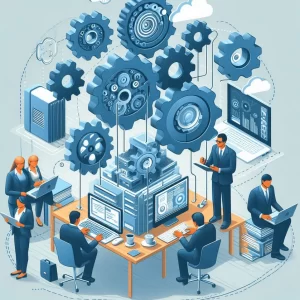How Dealer Margin Leads to Financial Freedom

Table of Contents
Dealer Margin In the realm of commerce and trade, where transactions shape the economic landscape, understanding the concept of Dealer Margin is paramount. It’s not just about buying and selling; it’s about harnessing the power of margins to build wealth and achieve financial freedom. Let’s delve into the transformative potential of Dealer Margin and explore how it can pave the way to a life of financial abundance!

Unveiling the Dynamics of Dealer Margin
Dealer Margin is a fundamental component of the pricing structure in the retail industry. It represents the difference between the price at which a product is purchased from a manufacturer or distributor and the price at which it is sold to the end customer. This margin serves as the profit margin for dealers or retailers, allowing them to cover operating expenses, generate profits, and reinvest in their businesses.
The Significance of Dealer Margin
The significance of Dealer Margin lies in its role as a driver of profitability and financial sustainability for businesses in the retail sector. By optimizing Dealer Margin, retailers can enhance their bottom line, improve cash flow, and build a solid financial foundation for future growth and expansion. Moreover, Dealer Margin provides retailers with the flexibility to adjust pricing strategies, respond to market dynamics, and capitalize on opportunities for increased revenue and profitability.
Strategies for Maximizing Dealer Margin
1. Negotiating Favorable Terms with Suppliers
One of the key strategies for maximizing Dealer Margin is negotiating favorable terms with suppliers and manufacturers. By leveraging their purchasing power and establishing strong relationships with suppliers, retailers can secure discounts, rebates, and incentives that lower the cost of goods sold (COGS) and increase Dealer . Negotiating favorable payment terms and volume discounts can also contribute to improving profitability and cash flow.
2. Implementing Pricing Strategies
Effective pricing strategies are essential for optimizing Dealer Margin and maximizing profitability. Retailers can employ various pricing tactics, such as competitive pricing, value-based pricing, and dynamic pricing, to capture maximum value from their products and services. By analyzing market demand, competitor pricing, and customer behavior, retailers can determine the optimal pricing strategy that balances profitability with market competitiveness.
3. Managing Inventory Levels
Managing inventory levels is critical for controlling costs and maximizing Dealer Margin. Retailers must strike a balance between stocking sufficient inventory to meet customer demand and minimizing excess inventory that ties up capital and incurs holding costs. By implementing inventory management systems, forecasting tools, and demand planning techniques, retailers can optimize inventory levels, reduce stockouts, and improve inventory turnover, ultimately boosting Margin.
4. Enhancing Operational Efficiency
Improving operational efficiency is another strategy for increasing Dealer Margin and driving profitability. By streamlining processes, reducing overhead costs, and eliminating inefficiencies, retailers can lower operating expenses and improve margins. Investing in technology solutions, automation, and employee training can help retailers optimize workflows, enhance productivity, and deliver superior customer service, all of which contribute to improved Margin.
5. Diversifying Product Offerings
Diversifying product offerings can help retailers capture new market segments, expand their customer base, and increase Dealer . By offering a wide range of products and services that cater to different customer needs and preferences, retailers can maximize revenue opportunities and mitigate risks associated with market fluctuations or changes in consumer behavior. Additionally, introducing private-label or exclusive products can provide retailers with higher margins and a competitive advantage in the market.
Real-Life Examples of Dealer Margin in Action
Let’s explore some real-life examples of how Dealer Margin has led to financial freedom for retailers:
Case Study 1: Fashion Boutique X
Fashion boutique X specializes in designer clothing and accessories. By negotiating favorable terms with suppliers and carefully curating their product selection, they are able to achieve a Margin of 50% on their merchandise. This high margin allows them to cover operating expenses, invest in marketing initiatives, and generate healthy profits, ultimately leading to financial freedom for the business owners.
Case Study 2: Electronics Retailer Y
Electronics retailer Y focuses on offering a diverse range of consumer electronics and gadgets. By implementing dynamic pricing strategies and leveraging their strong relationships with manufacturers, they are able to achieve a Dealer Margin of 40% on their products. This margin enables them to stay competitive in the market, offer competitive pricing to customers, and reinvest in expanding their product offerings and store locations, driving continued growth and financial success.
Dealer Margin
In conclusion, Dealer Margin plays a pivotal role in shaping the financial success and sustainability of retailers in the competitive retail landscape. By maximizing Margin through effective negotiation strategies, pricing tactics, inventory management, operational efficiency, and product diversification, retailers can achieve financial freedom and build a prosperous future for their businesses. By embracing the principles of Dealer optimization, retailers can unlock new opportunities for growth, innovation, and prosperity in the dynamic world of retail. So, seize the power of Margin today and pave the way to financial freedom for your business!





